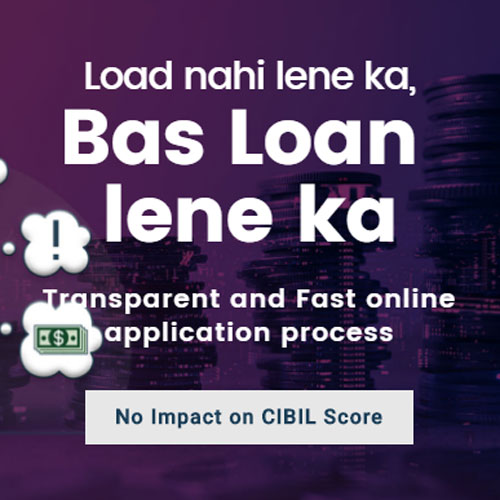Special allowance differs from company to company. In some companies, it constitutes any allowance or benefit granted to employees to meet specific expenses towards efficient performance of duties in an office or employment of profit (as laid down in the IT Rules, 1962). If it is specifically granted to employees, it is exempt to the extent of actual expenditure incurred.
Allowance is a fixed quantity of money besides salary given regularly by employers to meet certain specific requirements of their employees. All allowances are usually included in the total income of an employee unless exempted. The allowances are over and above the basic salary and taxable according to the guidelines set by the Income Tax Act.
Difference between Perquisites and Allowance?
While the money received by an employee for any objective is known as allowance, perquisites are several facilities offered by employers.
Taxable Allowance and Exempt Allowance:
Allowance can be divided into taxable allowance and exempt allowance. Exempt allowance can be further divided into the following:
- Exemption based on a specific computation method.
- Exemption based on the lower of amount of allowance or amount spent for the purpose of allowance.
- Exemption based on the prescribed amount or the lower of amount of allowance.
Special Allowance and Taxation:
Allowances, which are part of salary are taxable if no specific exemption is provided under the Income Tax Act/Rules. Certain allowances have been exempted from Income tax as per section 10(14) of the Income Tax Act. Section 10(14) has two clauses (i) and (ii). Items prescribed under clause 10(14)(i) has been given in rules 2BB(1). According to Section 10(14) (i), “any special allowance or benefit, not in the nature of a perquisite within the meaning of clause (2) of section 17, specifically granted to meet expenses wholly, necessarily and exclusively incurred in the performance of the duties of an office or employment of profit, to the extent to which such expenses are actually incurred for that purpose.”
If an allowance is qualified for exemption under the following conditions:
- Allowance should not be in the nature of a perquisite.
- Given for expenses wholly, necessarily and exclusively incurred for performance of duties of an office or employment of profit.
- Allowance should not be of personal nature.
- Restricted to amount given by employer and actual expenditure incurred by the employee for a purpose.
- No upper limit prescribed for allowances covered under this clause.
According to Section 10(14)(ii) any allowance granted to the assessee either to meet his personal expenses at his office or employment of profit are ordinarily performed by him or at the place where he ordinarily resides, or to compensate him for the increased cost of living, and to the extent. Any allowance notified under the sub clause (ii) of sub section 14 of section 10 is exempted from Income Tax to the extent it has been provided in the respective clause.
Allowances can be divided into three categories as the following:
- Fully exempted (E.g, allowances to Supreme court or High court judges).
- Partly exempted (E.g, house rent allowance is exempted u/s 10(13A) of the income tax act)
- Fully taxable (E.g, City compensatory allowance)
Categories of Special Allowance:
Special allowances are paid on a monthly basis and are taxable. Special allowance can be divided into two categories, namely, personal allowances and official allowances.
Various types of personal allowances include the following:
-
- Children Education Allowance
The maximum exemption of Rs. 100 per month per child for two children, while excess is taxable
-
- Hostel Allowance
The maximum exemption is Rs. 300 per month per child for two children. Excess is taxable
-
- Transport Allowance
The maximum exemption is Rs. 1600 per month. Excess is taxable. The maximum is Rs. 3200 per month in case of handicapped employees. Excess is taxable.
-
- Underground Allowance
Granted to employees working in underground mines. The maximum exemption is Rs. 800 per month, while excess is taxable.
-
- Tribal Area Allowance
Special allowance for residents living in hilly areas, scheduled areas and agency areas. Available in Madhya Pradesh, Uttar Pradesh, Karnataka, Odisha, Assam, Tamil Nadu and Tripura. The maximum exemption is Rs. 200 per month. Excess is taxable.
-
- Outstation Allowance
Allowance paid by railways, roadways and airways to their employees in lieu of daily allowance
Exempt to the least of 70% of allowance, Rs. 10,000 per month
Taxable = received – exempt
-
- Island Duty Allowance
Granted to members of armed forces for performance of duties in Andaman and Nicobar Islands and Lakshadweep Group of Islands. The maximum exemption is Rs. 3250 p.m.
Various types of official allowances include the following:
-
- Travelling Allowance
Includes cost of travel during tour or on transfer of duty. This allowance is exempt from Income Tax while saving is taxable.
-
- Daily Allowance
Includes daily charges incurred by an employee while on a tour. This allowance is exempt from Income Tax while saving is taxable.
-
- Conveyance Allowance
Includes expenditure incurred on conveyance during performance of duties of an employment of profit or office. This allowance is exempt from Income Tax while saving is taxable.
-
- Uniform Allowance
Includes expenditure on purchase and maintenance of uniform worn during performance of duties of an office or employment of profit. This allowance is exempt from Income Tax while saving is taxable.
-
- Academic/ Research Allowance
Granted for encouraging academic research and training pursuits in research institutions. This allowance is exempt from Income Tax while saving is taxable.
-
- Helper Allowance
Provided to cover expenditure incurred on a helper hired for performance of duties of an office or employment of profit. This allowance is exempt from Income Tax while saving is taxable.
Special Allowance Calculation:
Special allowance calculation can be understood by breaking down all the components of a salary slip.
While salary structure varies from company to company but by and large consists of the following parts.
- Gross salary, variable, CTC, total deduction and net pay
- Gross Pay is total pay prior to deduction and taxation.
- Basic Salary (40% of CTC) (Full amount is taxable)
- DA (20 % of basic salary) (Depends on company policy. Mostly taxable).
- HRA (50% of basic) (Applicable if living in a rented house)
- Medical reimbursement (Rs. 1250 p.m)
- LTA (depends on company policy) (On submission of bills, exempt to a limit of certain sum)
- Special allowance (depends on company policy) (taxable)
- Food coupon (based on company regulations)
Variable is extra salary given by company comprising the following:
- Performance based bonus (8.33 to 20% of gross)
- Employer’s contribution to PF (13.61% of basic)
- Mediclaim (differs from company to company)
- Gratuity (depends on company norms)
CTC is equal to gross plus variable
Deduction includes the following:
- Employees contribution to PF
- TDS
- Professional Tax





